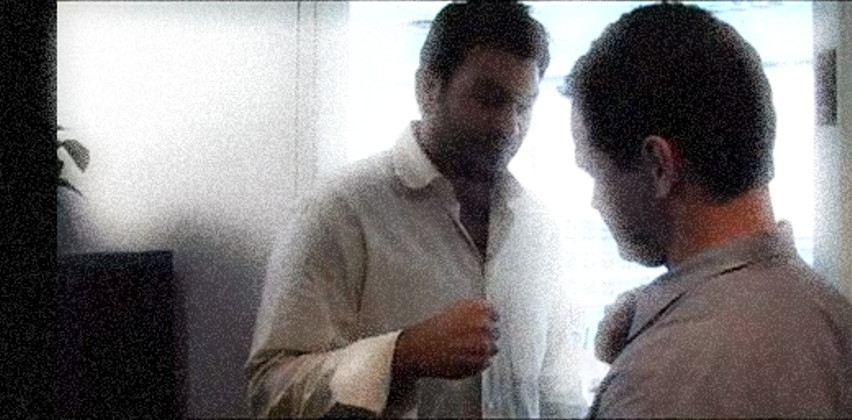If you’ve been doing marketing for more than a couple of years you remember the famous Agency.com fail, forever to be known as “Fistbump”. The agency creative director badly miscalculated how the world would appreciate their absurdly self-referential “viral video” of them pitching for Subway’s agency of record business. It’s meta, get it?
Even the ad industry hive-mind saw the fatal flaw in their colleagues’ vanity – way too obvious. But they all secretly nodded in quiet approval. They got it. Next time, amigos, leaven with some subtlety. More quietly, we all despised them for exposing the terrible truth of our shared industrial solipsism. And so these errors of hubris exact their price – Agency.com is no more.
I’ve spent the better part of a 30+ year career working at a mix of advertising, digital and specialist agencies, many under the omnivorous reach of what we unlovingly call the “holding companies”. In my case, WPP and Omnicom. I know these guys (and, btw sadly, they were and remain mostly all guys). If there’s one thing they all share it’s a singular passion and obsession for something they call “the work!“. They say it like that, with a reverence and awe that tells you, damn it, the work! is why we do what we do and how we do it.
The hopeless contrarian in me has always felt this to be utter bullshit and, worse, malpractice.
First, if the work’s the thing, our credibility fails even the laugh-test for pretending to be all about the customer. If we obsessed, instead, over customer-centricity our shared battle cry would’ve ended up closer to – “the human!“. It didn’t.
But then there’s the matter of what the work! is meant to do – sell stuff to those humans. But the agency halls don’t ring out with resounding shouts of “the business!” either.
What if we’ve been led to believe our own bullshit so deeply we’ve missed what’s always been the thing itself that matters most: the insight.
Here’s one ancient mariner’s take on how a regressive agency services model let their hypnotic fascination for the work! lead an entire generation of brands into an increasingly degraded un-promising land of business value. I warn you – there is a deeply optimistic punchline to all this, as I aim to point a way out of this world of marketing pain, confusion and waste that, for some of us, has been hiding in plain sight all along.
You should know I am a strategist. A strange muzzily defined discipline that remarkably few consider training for, agencies don’t know how to sell, clients hate paying for and our creative comrades-in-marketing-arms, well… Let’s just say there’s some history there.
The cult of fetishizing “the work!” over the human or the business, didn’t evolve from what some might suggest – the inevitable sense of hubris and self-importance resulting from our lionized “creatives”. At least not directly. My cynical take is that we can blame awards. Not just the bigbox Cannes Lions dramas, but a whole industry-full of category, channel and regionally specific awards. The shiny stuff you can win and put on your shelves. The stuff to stuff resumes with to argue for your next promotion, new job and that long-deserved but too-long deferred bump in comp.
I remember the day this insight came to me. It was an all-hands meeting at the Madison Avenue flagship offices of aging ad shop Young & Rubicam. The executive creative director (I can’t, but I want to…) rose to the front of our obeisant throng to speak. This handsome and magnetic specimen was worshipped by the rest of the network honchos, feared and listened-to by us agency minions and, we were led to believe, beloved and prized by our lucky and would-be clients. In a short and inspiring speech, he laid out his vision for success, his path for achieving it and the single KPI by which he’d measure whether we failed him or not.
Right. Awards. Clear, clean, easy to raise up aggressively over your head.
What horrifying myopia, I thought as I surveyed the room to see everybody else nodding and grinning beatifically like they’d all just glimpsed, in some sort of shared cluster dream, the wine and pay raises to follow soon.
Agency and holding company business owners support this kind of magical thinking for a reason: they assume it’s what the client CMOs want too. They want to be taken to Cannes. They want to be interviewed in AdWeek. They want their campaigns to win awards because, hell, if my tenure here at Brand X is only going to last a statistically frightening twenty-two months, it’ll certainly drive up my asking price for my gig next.
Maybe.
I remember another meeting of a very different kind – this one in a seriously cold northern European city that was the headquarters of a huge and venerable but faltering global brand our network served. I’m still unclear why they even allowed me into this meeting of otherwise very nervous grownups. Across the table we sat from the client CMO, and he broke the ice with a chilling double-question. “Out of all the checks I sign each month”, he glowered,”do you know which checks I hate signing the most? The marketing agency checks. And do you know why?… Because I have no idea what actual value they bring to my business.”
Every meeting has its moments and, if we’re paying attention, we learn from even the toughest. Damn, kids, especially the toughest. My key take-away from this one was easy: we need a really good handful of KPIs we can pin our value to. Makes sense, yes?
Maybe not.
The sort of marketing some of us renegades have been perpetrating into a modest science these past several years diverges greatly from the cult of the work! It proceduralizes a dual and ultimately united focus on the human and the business. We suggest a simple formula that posits fresh insight can manifest into value creation for humans, first, driving value capture for businesses.
The translation of that insight into value is, of course, the stuff we brief, create and figure out how to get in front of the humans we’re chasing across their day, week and lives. The ones flitting from one need to the next, oblivious to our efforts to meaningfully pop into sight until… boom. A little mini value bomb goes off under their finger, before their eyes, inside their heads.
Value marketing. It puts us in a totally different business, emerging from the self-induced fog of the celebrating-the-work! business into a freshly engineered I-have-something-for-you! business, based upon mutual value exchange.
Like the take-away following the frigid ‘worst check to sign’ meeting, we need some KPIs to prove the case for this sweetly radical formula. Again, we turn to the essential requirement – fresh insight. This time, discrete insights at the most intimate level of ‘need’ which we can hope to penetrate with our value. With these insights, we rationalize our choices for deciding where to invest the content, media and resources needed to show up at these targeted human moments of need. Et voila – the KPIs for measuring efficient ROMI practically write themselves. Then, we live and die by them.
CEOs will tell you the marketing function has a particular mandate within the enterprise – getting and keeping customers. CMOs will tell you their job is as specific as it is agonizing – decide what, when, how, where and for whom to put their marketing. Every quarter, month and increasingly week, their job is making career-riding bets about how those investments will profitably transform value for the humans they need to get and keep, into value for the business.
Our radical formula for turning insight into value is the key that unlocks this level of resource investment decisioning. A key with the power to unlock an entirely different kind of marketing.
My experience has been that making this shift in marketing process is weirdly problematic for most agencies. The task of turning insight into value for humans seems philosophical and messy, overly technical and complex, might require skills we haven’t met yet. There’s an irony to this resistance, since these procedures are inherently and infinitely creative. An idea must be sparked by that fresh insight. A creative strategy must be imagined which determines the formal stuff of what our marketing ends up looking and acting like. How it works.
There’s that word again – ‘work’. But it means something totally different in this new context. Back when advertising rules dictated the marketing playbook, we could afford to vainly celebrate “the work!” as the thing itself. That’s because we assigned it a very different job – fame. Fame for us the agency, for the marketers signing our checks and sharing our awards and, if the stuff actually worked, the brands and products we were meant to make famous. And yes, those are in the wrong order for a reason.
If we’re honest, every marketeer will admit becoming famous has little to do with 21st century brand and product marketing. Fame has become a dead KPI and most agencies and the CMOs who hire them (or increasingly, don’t) get this intuitively. But their org structures, rewards systems and (literally) values are not aligning along a revised path towards shared value creation with the people who matter the most in this chaotic mix – the customers.
The strategists I hang with suggest that path is laid out with actionable clarity in our little formula of insight + strategy = value event for humans resulting in value for business. And it turns out what my colleagues once imagined as the mystical “work” is actually a pretty good way to describe the job of this formula fueling a new marketing, turning human value into business value, one precious little human need-state at a time. Because make no mistake, this is hard work. But with potential for big returns.
If you’re a business or brand owner, stop focusing on awards, or AdWeek mentions or whizzy pitch creative that veers wildly off the human value mark. The job – the work – is different today than it was when the Don Drapers, real and imagined, haunted the Madison Avenues of our lives, jobs and TVs. Our new jobs have become existentially dependent on beating the competition to the fresh insights required to ignite a very different kind of marketing. A marketing that bestirs an alchemy of insight, strategy and creation to spark a very different kind of way for humans to experience and value brands.
This is the essence of radical marketing. This is the real work to be done.
This article is adapted and excerpted from Kennon’s upcoming Madland: a Battle Plan for Radical Marketing to be published in the Fall of 2019

